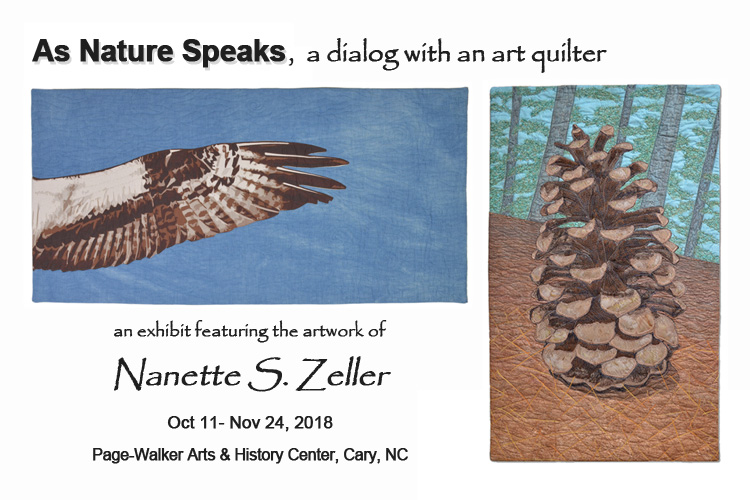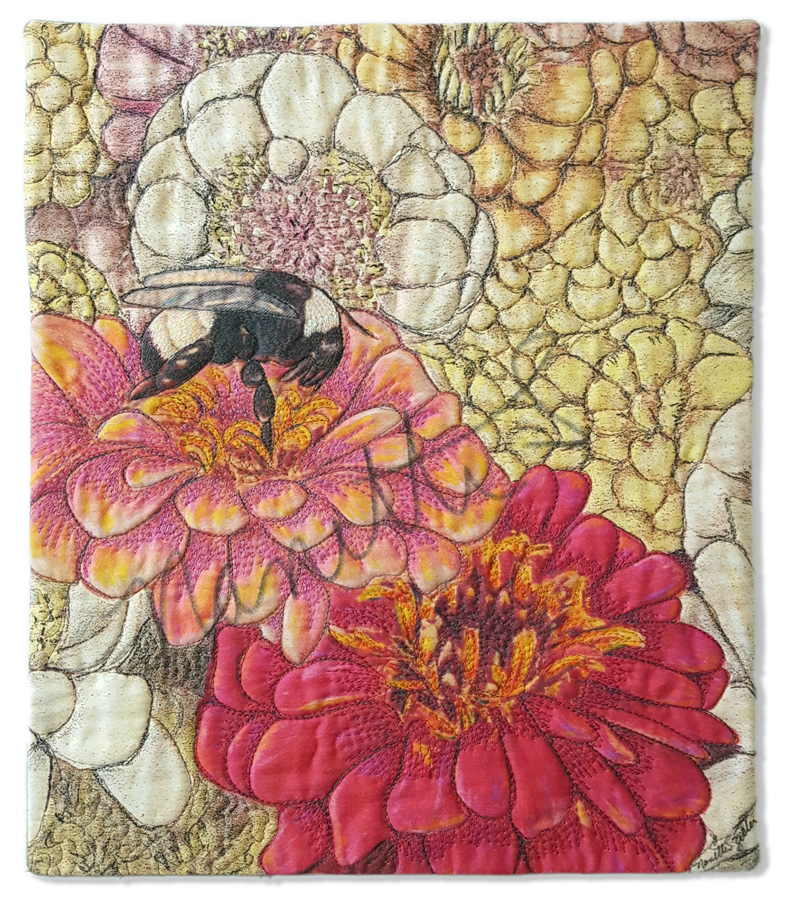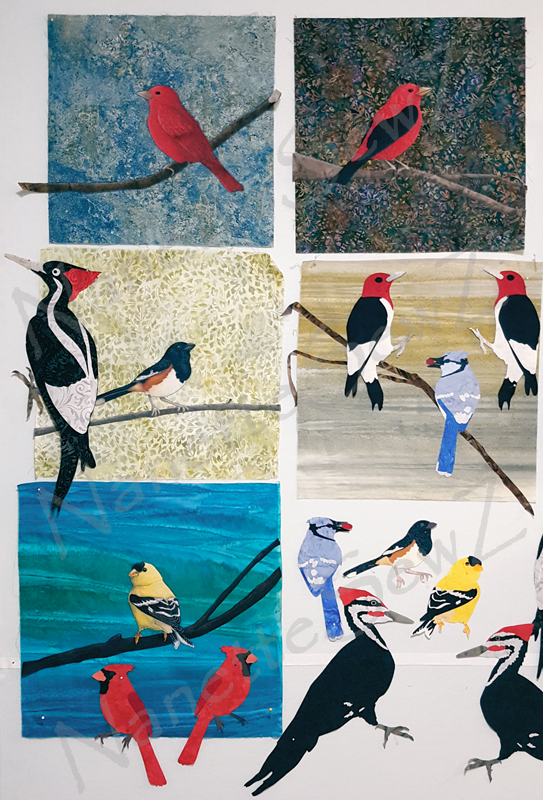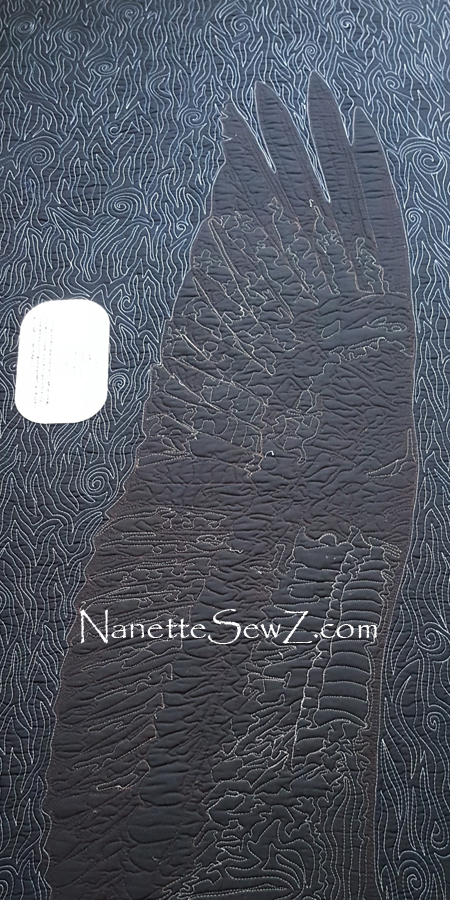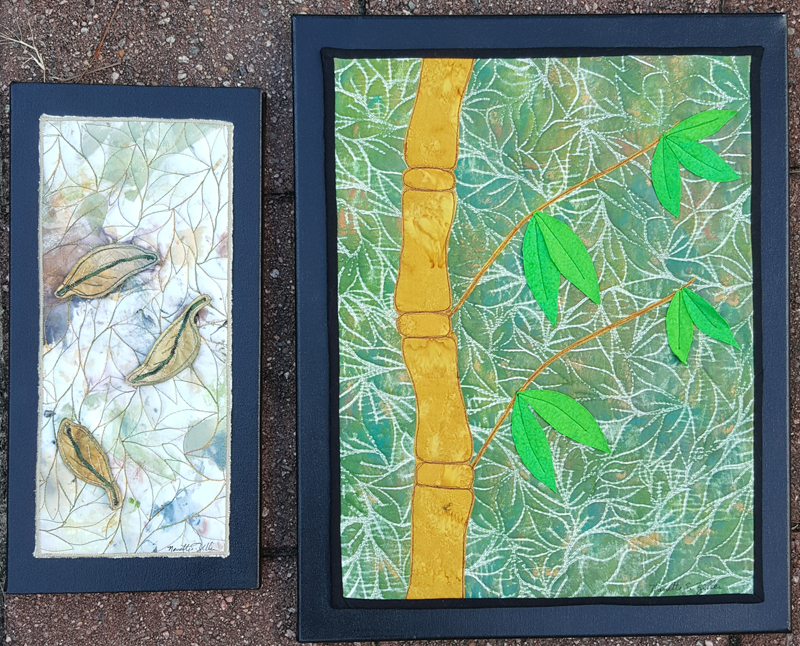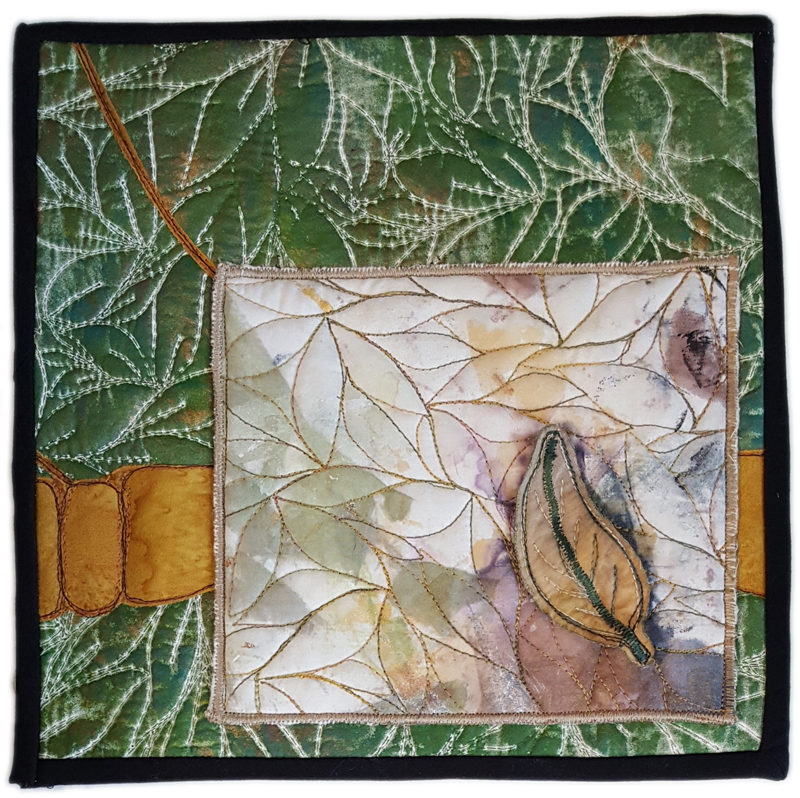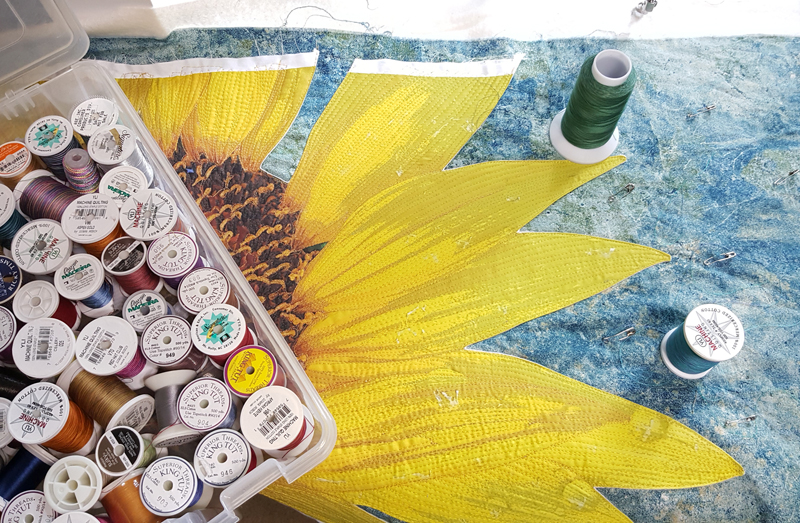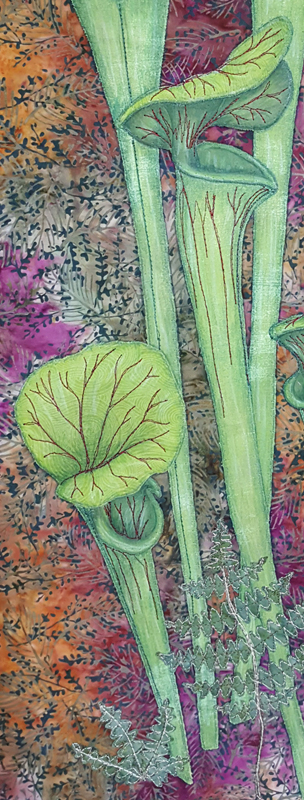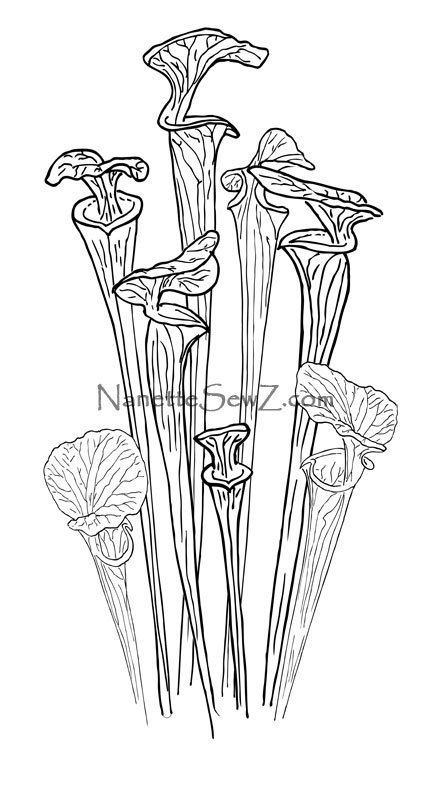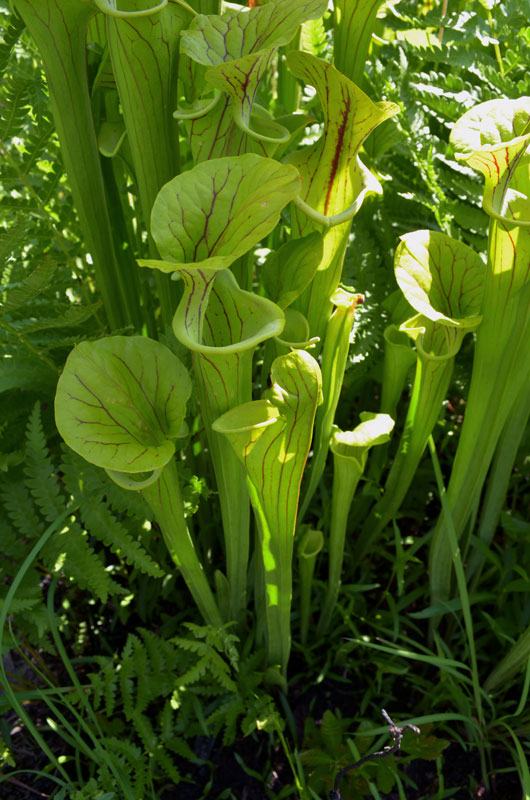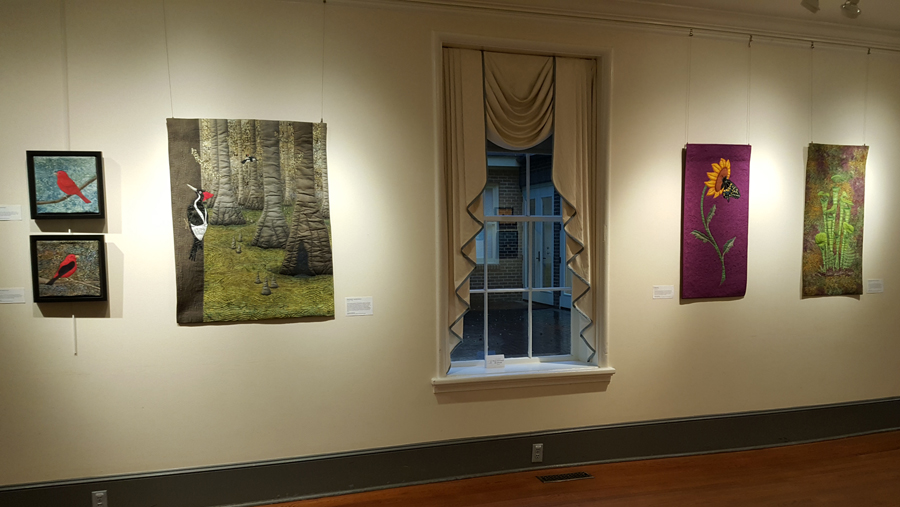 Last Friday night was the artist reception for my exhibit “As Nature Speaks” at Page-Walker Arts & History Center in Cary, NC. Weather didn’t cooperate, but I did enjoy seeing everyone who braved the storm. Page-Walker sparkles in the evening light. My artwork took on an entirely different feel with the spot lights directed in “just the right place.”
Last Friday night was the artist reception for my exhibit “As Nature Speaks” at Page-Walker Arts & History Center in Cary, NC. Weather didn’t cooperate, but I did enjoy seeing everyone who braved the storm. Page-Walker sparkles in the evening light. My artwork took on an entirely different feel with the spot lights directed in “just the right place.”
The 2 weeks before the reception, I was busy baking nature-themed goodies to share with the guest. I haven’t baked cookies in awhile. It was fun finding recipes that would be appropriate. The goodness included honey-lavender shortbread, honey-sugar cookies cut-out in bee shapes, and pumpkin spice cut-out cookies shaped and decorated like butterflies and feathers. Gotta love the Internet for finding these things.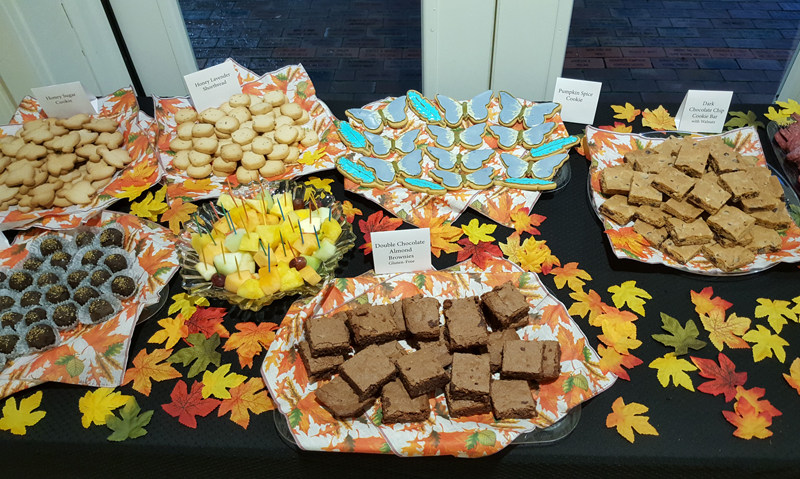
It was an enchanting night which included re-connecting with 2 dear friends who went to graduate school with me. In the more than 20 years since grad-school, we all should have aged…but I’m happy to report we didn’t. We’re still youthful friends, ready to conquer the world.
“As Nature Speaks, a dialog with an art quilter”
Featuring the artwork of Nanette S. Zeller
Oct 11- Nov 24, 2018
Page-Walker Arts & History Center, Cary, NC
119 Ambassador Loop, Cary, NC 27513
Call ahead to check gallery availability (919) 460-4963
